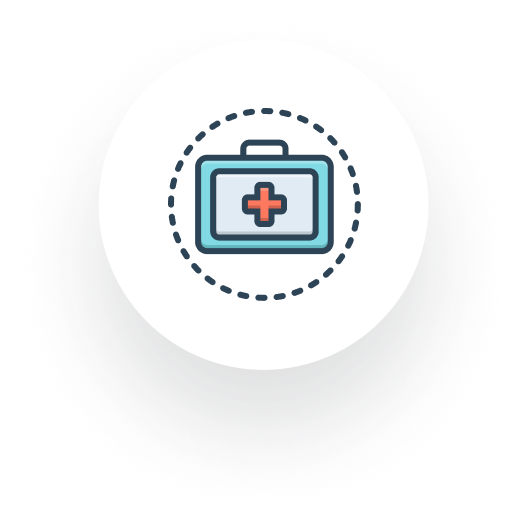Impetigo
Introduction
Before choosing a treatment, you’ll need to complete a short online consultation. This helps ensure you receive the most appropriate and effective option for your condition.
Impetigo
Impetigo is a common skin condition that usually occurs in young children, although anyone can get it. Impetigo is very contagious, but generally not serious. In the UK, impetigo is the most common skin infection for young people.
The condition dates back to the 14th century, and the name impetigo is derived from the Latin word impetere, which means “to attack”.
What Is Impetigo?
Impetigo happens when bacteria such as Streptococcus pyogenes or Staphylococcus aureus infect the epidermis (outer skin layers). The areas of the body affected most often by impetigo are the face, the arms and the legs.
Children are more likely to get impetigo than adults, particularly those between the ages of 2 and 5. The infection can start in insect bites or cuts (secondary impetigo) but can also develop on healthy skin (primary impetigo).
Impetigo Symptoms
There are several impetigo symptoms to look out for, including red sores, blisters and crusty patches. We will come onto the various stages of impetigo later on this page. There are three types of impetigo:
- Nonbullous impetigo – the most common type in adults, characterized by thick crusts that are honey-colored
- Bullous impetigo – a form of impetigo that causes big blisters
- Ecthyma – a more serious type of impetigo that typically results from impetigo which has gone untreated. This type causes ulcerative sores that are entrenched into the skin’s deeper layers
Impetigo can develop anywhere but is more likely to occur in exposed areas such as the face and hands.
What Causes Impetigo?
Impetigo is caused by one, or both, of two types of bacteria; Streptococcus pyogenes and Staphylococcus aureus. These bacteria can enter the body via a break in the skin from a scratch, cut or bite, allowing them to colonies. Impetigo is contagious, and you may catch it by touching sores on the body of a person who has the infection. You could also catch impetigo by touching the clothes, sheets or towels that an infected person uses.
Staphylococcus aureus bacteria can be carried inside the nose, and then cause an impetigo infection if it spreads to the person’s skin. But because Streptococcus pyogenes or Staphylococcus aureus are common, coming into contact with them doesn’t necessarily mean you will catch impetigo.
You may be at a higher risk of impetigo if you:
- Have diabetes
- Have a weak immune system
- Live in a humid climate
- Are undergoing dialysis for kidney problems
- Have a skin condition
- Have sunburn
- Play sports that involve physical contact
- Have insect bites
- Have an infection that causes itching (such as chickenpox or lice)

Guides
In this article we outline everything you need to know about migraines. We talk about the different types of symptoms and how to prevent them from happening. In this week’s edition of my Digital Drug Store article. I take a look at the weird and wonderful world of migraines. For those of you that are unfortunate […]
In an attempt to combat the spread and slow down of COVID-19, everyone is taking part in a ‘trending’ movement known as ‘Social Distancing’. It’s currently Easter weekend in the UK and for the first time in what feels like a millennia, the sun is beaming; instead of spending this time with our loved ones […]
In this article we discuss how to prevent the spread of COVID-19, the functions of a face mask and whether they should be used in public or not. Within the last few weeks your world has been flipped upside down. You may be asking yourself when will this end? What will happen to the schools? […]
How It Works

01
Find Your Treatment
Browse by condition or medication to locate what you need.

02
Complete a Safe Consultation
Our secure form allows our medical team to assess your needs

03
Receive & Recover
Have it shipped directly to you or schedule click-and-collect—fast and worry-free.







